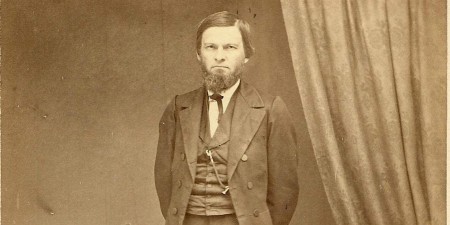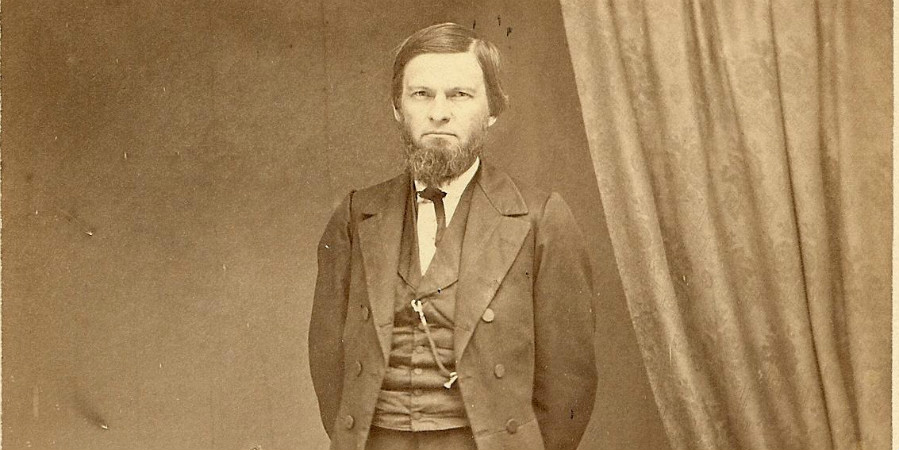
A.T. Robertson (1863-1934), famed Southern Baptist Theological Seminary scholar of New Testament Greek, wrote of his seminary colleague and father-in-law John Albert Broadus (1827-1895), “It has been my fortune to hear Beecher and Phillip Brooks, Maclaren, Joseph Parker and Spurgeon, John Hall and Moody, John Clifford and David Lloyd George. At his best and in a congenial atmosphere Broadus was the equal of any man I have ever heard” (The Minister and His Greek New Testament, 118
In 1870, Broadus published A Treatise on the Preparation and Delivery of Sermons. The volume is thought to be the most popular homiletics textbook in American history. Broadus was a famed preacher, the first professor of homiletics of The Southern Baptist Theological Seminary and he also served as its second president. Broadus describes the importance of preaching in vivid language,
The great appointed means of spreading the good tidings of salvation through Christ is preaching—words spoken whether to the individual, or to the assembly. And this, nothing can supersede. Printing has become a mighty agency for good and for evil; and Christians should employ it, with the utmost diligence and in every possible way, for the spread of truth. But printing can never take the place of the living word. When a man who is apt in teaching, whose soul is on fire with the truth which he trusts has saved him and hopes will save others, speaks to his fellow-men, face to face, eye to eye, and electric sympathies flash to and fro between him and his hearers, till they lift each other up, higher and higher, into the intensest thought, and the most impassioned emotion—higher and yet higher, till they are borne as on chariots of fire above the world,—there is a power to move men, to influence character, life, destiny, such as no printed page can ever possess. Pastoral work is of immense importance, and all preachers should be diligent in performing it. But it cannot take the place of preaching, nor fully compensate for lack of power in the pulpit (All quotes unless otherwise noted are from: Broadus, A Treatise on the Preparation and Delivery of Sermons, 10th edition, 17-18 [A.C. Armstrong, 1887]).
Consider Broadus’s six rules for interpreting a biblical text for preaching from A Treatise on the Preparation and Delivery of Sermons:
1. Interpret Grammatically
“Endeavor to ascertain the precise meaning of the words and phrases used in the text. Inquiry whether any of them have a peculiar sense in Scripture, and whether such peculiar sense holds in this passage. If there are keywords in the text, or words of special importance, examine, by the help of a concordance, other passages in which such word is employed” (78).
2. Interpret Logically
“The connection of thought in which a text stands will of course throw light upon its meaning, and is usually indispensable to understanding it. This logical connection will sometimes really be the entire book to which the text belongs. There are very few sentences in Hebrews, or in the first 11 chapters of Romans, which can be fully understood without having in mind the entire argument of the epistle. Of course this is not so strikingly true in most of the books, but each of them has its own distinctive contents, connection and character. Few things are to be so earnestly urged upon the student of Scripture, as that he shall habitually study its books with reference to their whole connection” [here Broadus provides a footnote that points the reader to his discussion on the importance of expository sermons] (79-80).
3. Interpret Historically
“Apart from the logical connection of discourse in which a text is found, there is often an important aid to be derived from general historical knowledge. In the narratives, which make up the larger part of Scripture, we have constant need of observing facts of geography, which would throw light on the text. So as to the manners and customs of the Jews, and other nations who appear in the sacred story. Thus much is obvious, though these helps for understanding text are seldom used as diligently as they should be” (81).
4. Interpret Figuratively
“Interpret figuratively, where there is sufficient reason. Wherever it is clear, from the nature of the case, from the connection, or from personalized least similar expressions in other passages, that the literal sense is not designed, then we must understand figuratively” (82).
5. Interpret Allegorically
“Interpret allegorically, where that is clearly proper. We cannot take it for granted that any passage has an allegorical, or so-called “spiritual” sense, merely because the notion suits our fancy, or would promote our convenience. There must be good reason to think so. Whatever the New Testament so uses, is certainly allegorical; whatever else is precisely similar to matters so used in the New Testament, is very probably allegorical” (83).
6. Interpret in Accordance with and not Contrary to, the General Teachings of Scripture
“These teachings are harmonious, and can be combined into a symmetrical whole. If a passage may have two senses, owing to the ambiguity of some word or construction, to the doubt whether some expression is figurative, etc., then we must choose one which accords with what the Bible in general plainly teaches, rather than one which would make the Bible contradict itself” (85).
In Broadus’s sermon, “The Holy Scriptures” from 2 Timothy 3:15 he explains the Christ-centered focus of all biblical interpretation:
That is the way in which they do it through faith which is in Christ Jesus: for the holy Scriptures of the Old Testament are never half understood except as they are seen in the light of Christ Jesus. They all pointed forward to Christ Jesus; they all found their fulfillment, the key of their interpretation, in Christ Jesus. The Old Testament history is not merely a history of some wandering patriarchs and of a strange, wayward people of wonderful powers and wonderful propensities to evil. It is not merely a history of Israel. The Old Testament is a history of redemption, of God’s mightiness and mercies, and of a chosen nation, all along toward the promised, long-looked-for time when God’s Son should come to be the Saviour of mankind. We cannot understand the Old Testament, except we read it in its bearing upon Christ, as fulfilled in him (Broadus, Sermons and Addresses, 160-161 [A.C. Armstrong, 1891]).




